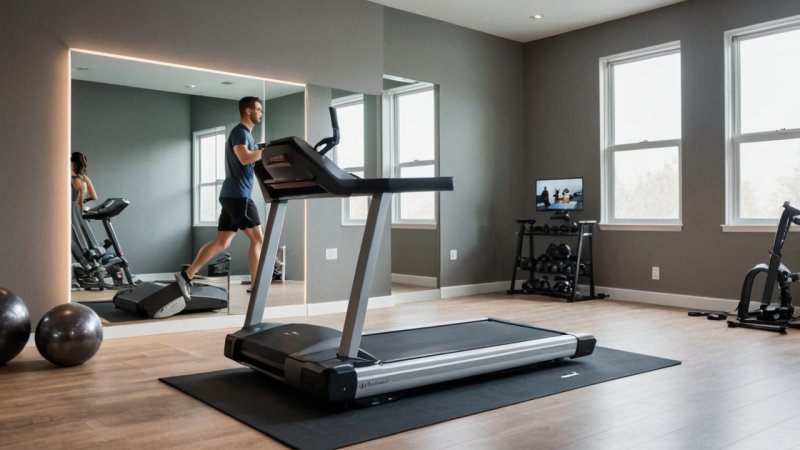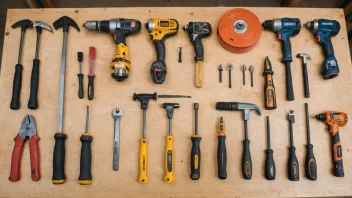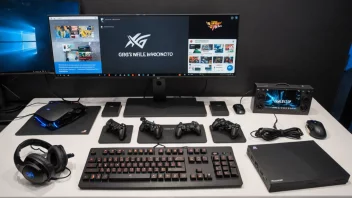In the modern world, integrating technology into our daily lives has become increasingly essential, especially when it comes to fitness and health. With the rise of smart home devices, men can now create a tailored fitness regimen that enhances their workouts and promotes a healthier lifestyle without ever having to leave the comfort of their homes. This article delves into how to build a smart home fitness regimen, exploring the various technologies available, the benefits of smart fitness equipment, and practical tips for optimizing workouts.
Understanding Smart Home Fitness Technology
Smart home fitness technology encompasses a wide range of devices designed to assist users in tracking and improving their physical health. This includes everything from smart fitness trackers and smart scales to connected home gym equipment and health monitoring apps. The primary goal of these devices is to provide real-time feedback, enhance motivation, and simplify the process of reaching fitness goals.
The Rise of Smart Fitness Devices
Over the past decade, smart fitness devices have exploded in popularity. The introduction of wearable technology such as fitness trackers and smartwatches has empowered individuals with the ability to monitor their physical activities, heart rate, sleep patterns, and even stress levels. Devices like the Apple Watch, Fitbit, and Garmin have revolutionized personal fitness by offering insights and data that were previously only available in clinical settings.
Connected Home Gym Equipment
Beyond wearables, smart home gym equipment has also gained traction. Products like Peloton bikes, Mirror, and Tonal provide interactive workouts that can be accessed from the convenience of home. These devices often feature live streaming classes, on-demand workouts, and personalized coaching, allowing users to engage in a comprehensive fitness regimen tailored to their preferences and goals.
Setting Up Your Smart Fitness Environment
Creating a smart home fitness regimen begins with establishing a dedicated workout space equipped with the right technology. Here are some key components to consider:
1. Designate a Workout Space
Choose a specific area in your home where you can comfortably work out without distractions. This space should be large enough to accommodate your fitness equipment and provide adequate room for movement.
2. Invest in Smart Equipment
Depending on your fitness goals, consider investing in the following smart equipment:
- Smart Treadmills: These often come with built-in screens for streaming workouts and tracking your performance.
- Smart Weights: Adjustable weights that connect to apps for tracking reps, sets, and weight lifted.
- Connected Fitness Mirrors: Provide real-time feedback during workouts and allow access to various fitness classes.
- Smart Yoga Mats: These mats can track your movements and offer real-time corrections through connected apps.
3. Utilize Fitness Apps
Complement your smart devices with fitness apps that can help you set goals, track workouts, and monitor progress. Popular options include:
- MyFitnessPal: For tracking nutrition and exercise.
- Strava: Ideal for tracking outdoor activities such as running and cycling.
- Fitbod: A personalized workout planner that adapts to your fitness level and available equipment.
Creating Your Fitness Regimen
Once you have your smart fitness environment set up, it's time to craft a fitness regimen that works for you. Here’s how to get started:
1. Define Your Fitness Goals
Start by identifying your fitness goals. Are you looking to lose weight, build muscle, improve endurance, or increase flexibility? Setting clear, achievable goals will help you stay focused and motivated.
2. Develop a Balanced Routine
Your fitness regimen should include a mix of cardiovascular exercise, strength training, and flexibility workouts. A balanced routine ensures that you work on different aspects of fitness and prevents burnout. Here’s a sample weekly schedule:
- Monday: 30 minutes of cardio (running, cycling, or HIIT)
- Tuesday: Strength training focusing on upper body
- Wednesday: Yoga or stretching session
- Thursday: Strength training focusing on lower body
- Friday: 30 minutes of cardio
- Saturday: Full-body workout or outdoor activity
- Sunday: Rest and recovery
3. Monitor Your Progress
Use your smart devices to track your workouts and monitor your progress. Many fitness apps allow you to log activities, set reminders, and share achievements with friends for added motivation. Regularly reviewing your data will help you understand what works and what may need adjustment.
Incorporating Smart Nutrition
A comprehensive smart home fitness regimen goes beyond just physical activity; nutrition plays a crucial role in achieving your fitness goals. Here are some ways to integrate smart nutrition into your routine:
1. Smart Kitchen Appliances
Consider investing in smart kitchen appliances that promote healthy eating. Devices like smart scales, blenders, and slow cookers can help you prepare nutritious meals efficiently. For example, a smart scale can help you measure portions accurately, ensuring you're not overeating.
2. Meal Planning Apps
Use meal planning and nutrition tracking apps to simplify your cooking process. Apps like Yummly and Mealime can provide personalized meal plans based on your dietary preferences and fitness goals.
3. Hydration Monitoring
Staying hydrated is essential for optimal performance. Consider using a smart water bottle that tracks your water intake and reminds you to stay hydrated throughout the day.
Staying Motivated and Engaged
Creating a sustainable fitness regimen can be challenging, especially when working out at home. Here are some tips to maintain motivation:
1. Set Short-Term Challenges
Incorporate short-term challenges into your routine to keep things interesting. This could include a 30-day squat challenge or a step count competition with friends.
2. Join Virtual Fitness Communities
Engage with online fitness communities for support and motivation. Platforms like Strava and fitness-focused Facebook groups can provide a sense of camaraderie and accountability.
3. Celebrate Your Achievements
Take the time to acknowledge your progress. Whether it’s hitting a personal record or consistently sticking to your regimen, celebrating achievements can boost motivation.
Conclusion
Creating a smart home fitness regimen is an effective way to incorporate technology into your health and wellness journey. By understanding the available smart fitness devices, setting up a dedicated workout space, and developing a balanced routine, you can optimize your workouts and achieve your fitness goals. Remember to monitor your progress, incorporate smart nutrition, and stay motivated. With the right tools and mindset, you can transform your home into a fitness sanctuary that supports your aspirations for a healthier lifestyle.






